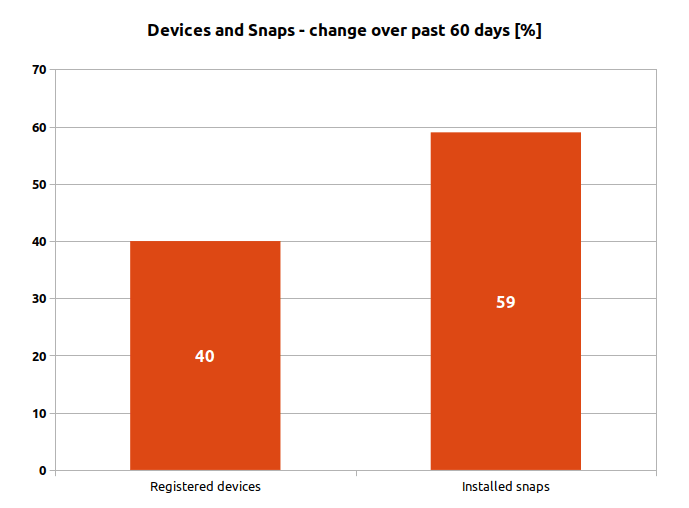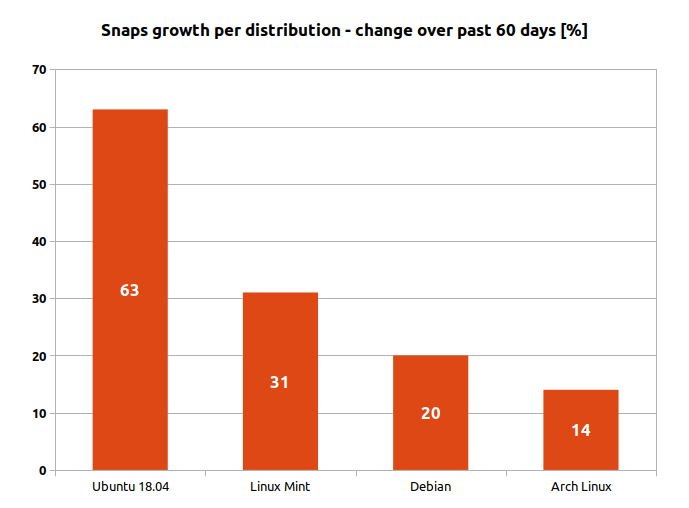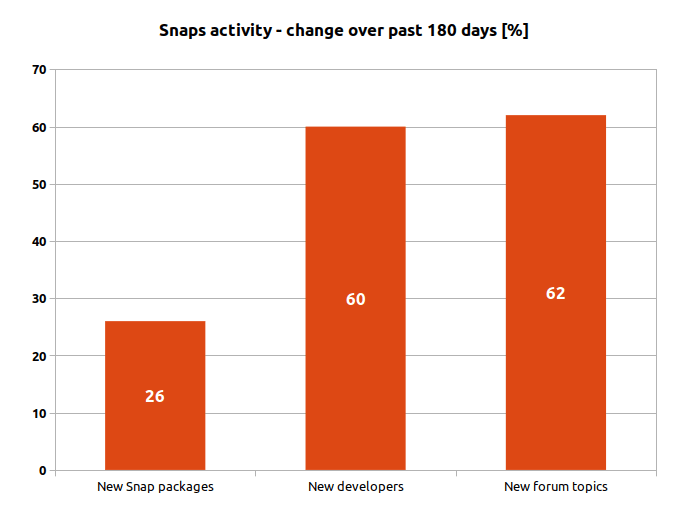Snapistics – Snaps in numbers
by Igor Ljubuncic on 10 October 2018
Actions speak louder than words. So do numbers. When we talk about snaps, we often focus on the application packages, and talk about their individual merits. However, a no less important – and interesting – facet is the collective numbers behind the scenes. They tell a compelling story for developers and users alike. They allow us to look back and piece together a puzzle of perception and adoption, and map them onto underlying factors, like the introduction of the new Ubuntu LTS release, the availability of popular software, and deliberate changes introduced to make snaps more robust and accessible.
Indeed, how do people perceive snaps? How well accepted are snaps in software development circles? Today, we’d like to share some of these figures.
One big family
We cannot share everything, of course, but we can put together some interesting aggregated statistics, which highlight the snappiness of this endeavor.
For instance, in the past sixty days, we have seen a 40% increase in the number devices running snaps, but even more importantly, a 59% increase in the number of installed snaps, which shows a growth in snap adoption among Linux users. Over the past six months, the number of devices running snaps has more than trebled.

Ubuntu 18.04 Bionic Beaver is now the most popular snap-enabled platform, and it has also seen a 63% growth over the same period. Ubuntu 16.04 Xenial Xerus takes a second place and is still seeing strong growth which is common with LTS releases.
It’s not all Ubuntu, either. For example, taking a small subset of all supported distributions, Linux Mint systems have seen a growth of 31%, Debian systems about 20% to name but two. There is also adoption amongst many other distributions. For instance, Arch-based systems show a solid 14% growth. Today, we have more than 50 distributions using snaps and this is growing steadily.

Don’t forget the weather
Cloud adoption comes with even more impressive numbers. Over the past two months, the number of registered cloud devices running snaps has grown a handsome 136%. Well, it wouldn’t be cloud, and it wouldn’t be interesting, if the percentage numbers weren’t at least three figures. This jump can be seen as an indicator of perceived convenience and practicality of snaps in the cloud.
The need for stability and predictability is a critical factor in the industry, and being able to rely on the security that confined software brings has skyrocketed their growth. Both Amazon and Google, among others, use snaps in their Ubuntu cloud images.
Snap your fingers
The availability of content is an important factor, reflected in the increase of available snap packages by approximately 26% since the official release of Ubuntu 18.04 just 6 months ago. The vast majority of these packages are in the stable channel and today we see over 4000 snaps available to download, a tremendous feat by our community.
The number of developers has also increased by 60% over the past six months, showing a healthy interest in snaps and their benefits. The interest also manifests in the participation on various online forums, with an increase of about 62% in new topics being discussed on the Snapcraft forum, as well as more activity on Launchpad – and more bugs reported, which is often a good sign. While bugs are not conducive to the user experience, they do show people are interested in seeing problems resolved.

What the numbers don’t tell…
But there is a flip side to this story. The impressive growth of snap adoption does not tell us anything about developers and users who have still not tried snaps and snapcraft – or they did try and chose not to persist, for whatever reason.
In other words, we would like to ask you: What would make you start using snap packages as a developer or user? What kind of functionality would you like to see included? How do you envision snaps making your life easier?
Please join the discussion thread and share your thoughts.
